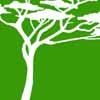Ochna
Source:
SSA
Description:
Trees or shrubs, or occasionally virgate, soboliferous shrublets; bark rough or smooth, sometimes flaking. Leaves semipersistent, shed in spring or in times of drought, usually shortly petiolate, ovate, obovate, oblong to linear, margin entire to serrate, midrib prominent on both sides, veins spreading, distinctly reticulate; stipules intrapetiolar, fused, bifid or bidentate. Flowers often fragrant, in terminal or axillary panicles or racemes or reduced to subumbellate, many- to few-flowered cymes or solitary, on short lateral spurs; pedicels articulated near base or in lower half, accrescent; bud scales or bracts distichous, caducous, leaving transverse scars on twigs. Sepals 5, quincuncial in bud, green or yellow, persistent, enlarging and usually turning red or pink in fruit, firm, enveloping bud and usually young fruit, but spreading at anthesis and when fruit is ripe. Petals 5, yellow, orange or rarely white, usually obovate, attenuate or clawed at base, fugaceous. Stamens 30-40, free, irregularly placed in a dense whorl on torus; filaments filiform, persistent, apex slightly capitate; anthers bilocular, opening by longitudinal slits or apical pores, basifixed, caducous. Carpels 5-15, 1-ovulate, attached basally or laterally to the receptacle; styles gynobasic, completely united or upper ends free, recurved; stigmas apical, as many as carpels or fused and capitate. Drupelets 1-several, some usually aborting, 1-seeded, kidney-shaped, usually hard, black and shiny, attached basally to swollen, often red receptacle. Seed +/- reniform to straight, without endosperm and without internal projection of endocarp. x = 7 (polyploidy).
Distribution:
Species +/- 86, Africa, Mascarenes and Asia; 12 in sthn Afr., widespread but absent from the winter-rainfall region.
